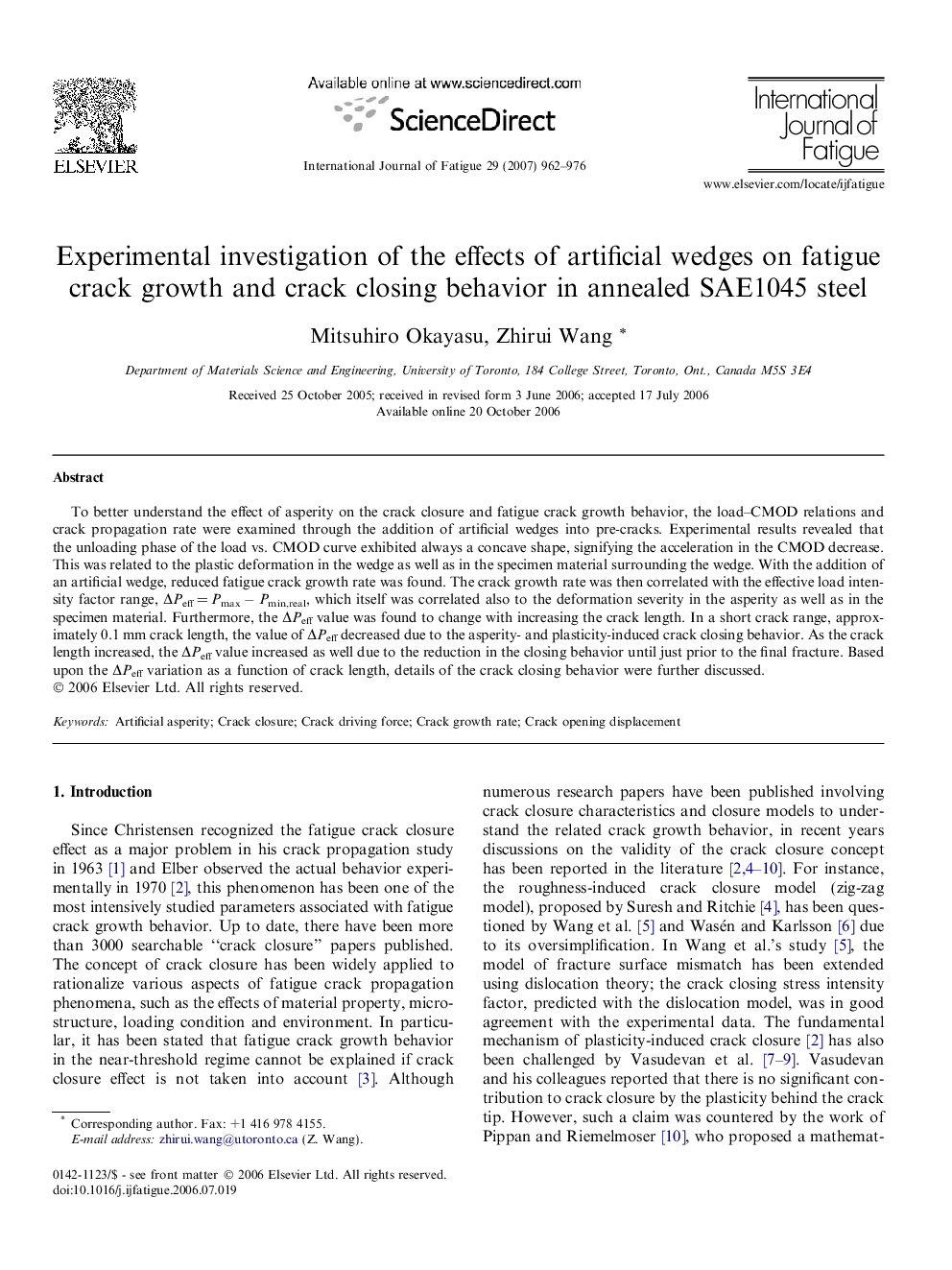| Article ID | Journal | Published Year | Pages | File Type |
|---|---|---|---|---|
| 781707 | International Journal of Fatigue | 2007 | 15 Pages |
To better understand the effect of asperity on the crack closure and fatigue crack growth behavior, the load–CMOD relations and crack propagation rate were examined through the addition of artificial wedges into pre-cracks. Experimental results revealed that the unloading phase of the load vs. CMOD curve exhibited always a concave shape, signifying the acceleration in the CMOD decrease. This was related to the plastic deformation in the wedge as well as in the specimen material surrounding the wedge. With the addition of an artificial wedge, reduced fatigue crack growth rate was found. The crack growth rate was then correlated with the effective load intensity factor range, ΔPeff = Pmax − Pmin,real, which itself was correlated also to the deformation severity in the asperity as well as in the specimen material. Furthermore, the ΔPeff value was found to change with increasing the crack length. In a short crack range, approximately 0.1 mm crack length, the value of ΔPeff decreased due to the asperity- and plasticity-induced crack closing behavior. As the crack length increased, the ΔPeff value increased as well due to the reduction in the closing behavior until just prior to the final fracture. Based upon the ΔPeff variation as a function of crack length, details of the crack closing behavior were further discussed.
